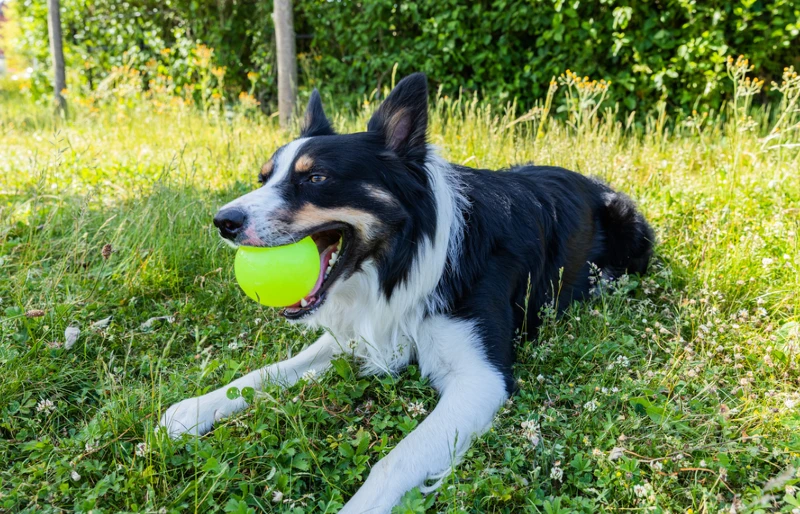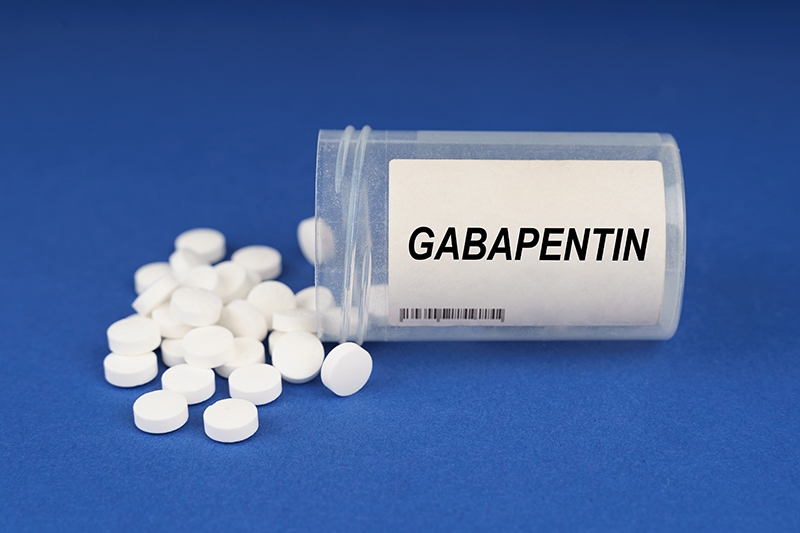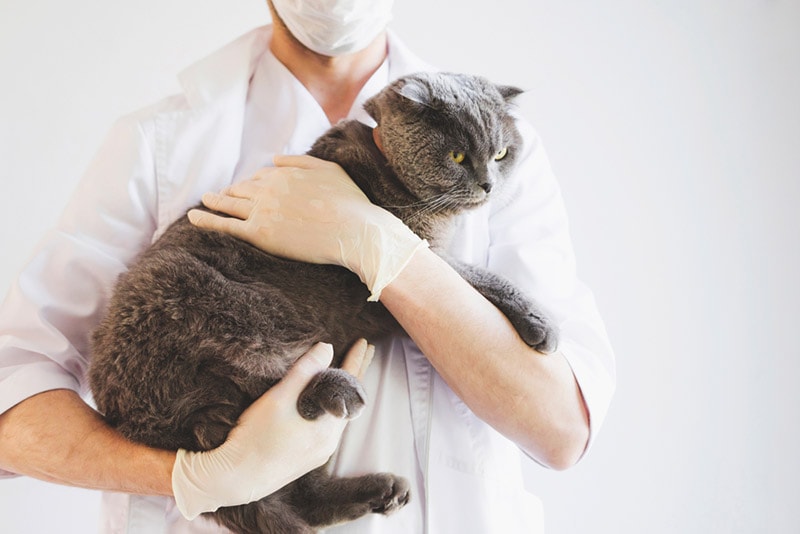Bumps On a Cat’s Nose – Causes, Symptoms, and Care (Vet Answer)
Updated on
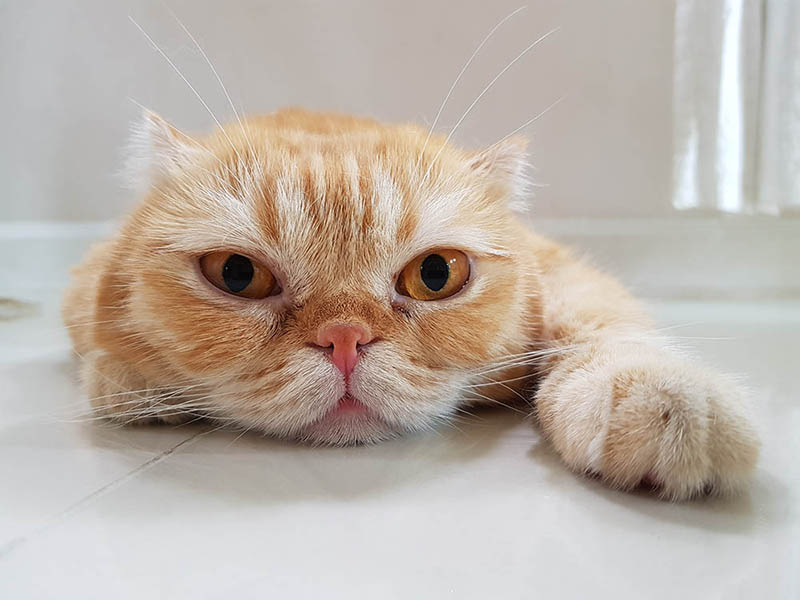
Cat’s noses are sensitive areas, prone to scrapes and scratches, but also a handful of unique issues. Bumps on a cat’s nose can be quite disturbing to see, especially if they are large enough to actually cause facial deformity.
But how concerning should a bump on a cat’s nose be? What causes them? And what can you do about them? Read on to learn more about bumps on a cat’s nose, and what to do about them.
What are Bumps On a Cat’s Nose?
Due to the exposed nature of a nose’s location, trauma (including cuts and scrapes) can lead to swelling and a bump on the nose. Bug bites are also popular in this area, which can cause swelling. And because the nose has very limited space, any growth or swelling can quickly become very pronounced, leading to the deformation of a cat’s facial features.
But, other processes of a more serious nature can also occur—including growths and cancer. Often, with the latter, you will also see symptoms in your cat that may include nasal bleeding, sneezing, reverse sneezing, inflammation in the nose of sinus passages (rhinitis or sinusitis), coughing, squinting, hair loss, or tearing of one or both eyes.
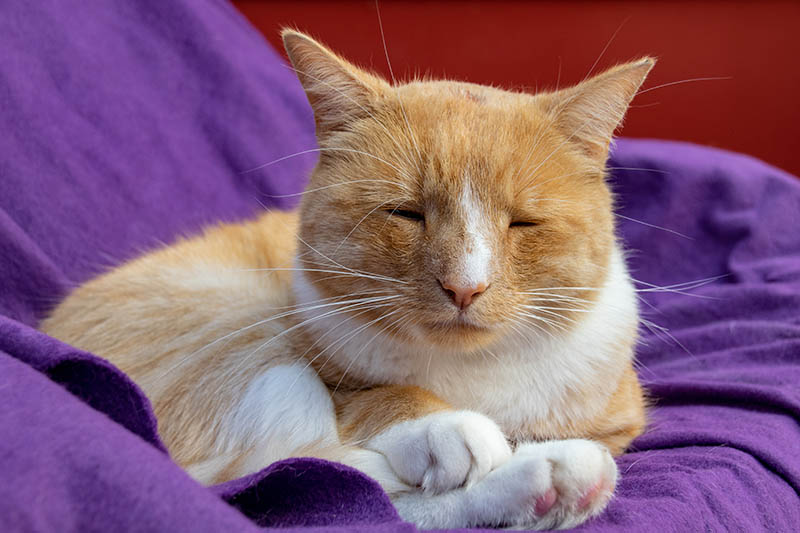
Where Are the Causes of Bumps On a Cat’s Noses?
Bumps on a cat’s nose can be caused by a variety of different issues. Bumps can occur because of trauma, which can cause a local tissue reaction of inflammation and swelling, resulting in a bump. Bumps can also occur due to allergic reactions to things, such as mosquito or spider bites, which can cause hives or swelling of the nose. This is a fairly unique feline reaction to such bites, but also fairly common!
Infections of the nose and sinus passages might sometimes cause redness, inflammation, and swelling of the nose as well. The medical terms for these conditions are rhinitis and sinusitis, respectively. Things that aren’t infections, though they may look like one, can include insect larva that gets stuck up in a cat’s nostrils, called cuterebra, or foreign bodies, such as seeds of plants or grass.
Like most organs, cancer of the nose can also occur, causing swelling. The most common cancers in this area include skin cancers and a cancer called lymphoma.
Sunburn can certainly occur on a cat’s nose, as well—causing swelling and bumps on the nose.
What Are Symptoms of Diseases That Can Cause Bumps On a Cat’s Nose?
Symptoms tend to relate to issues in the upper respiratory tract—including nasal discharge that can be clear, bloody, or mucusy, sneezing or reverse sneezing, pain upon touching the nose, and loss of hair over the bridge of the nose. Post-nasal drip can lead to hard or frequent swallowing, and coughing as well. If there is discharge present, it is important to take note of which nostril is the problem—right, left, or both. This can help your vet to localize where concerns may lie.
Fever, loss of appetite, lethargy, decrease or loss in the sense of smell, change in the sound of a cat’s voice, or loss of their voice entirely can all accompany the above symptoms as well. Generally, however, most cats with issues causing bumps on the nose aren’t systemically unwell. Most of the time, they’ll only present with symptoms that relate directly to the nose.
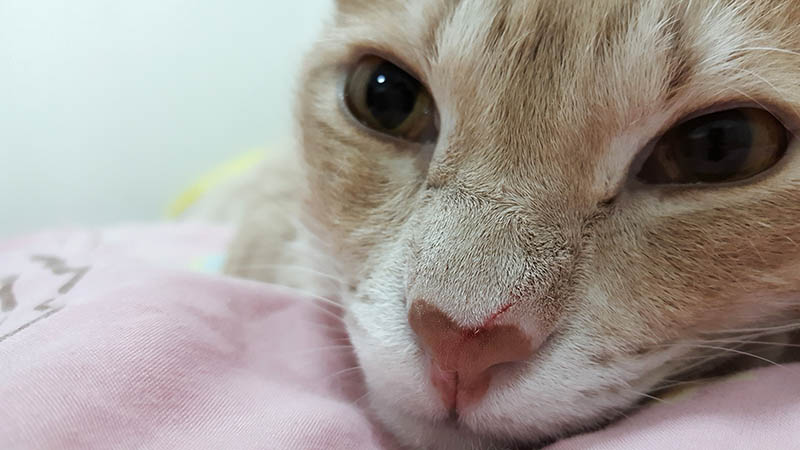
How Can You Care For a Cat with Bumps On Their Nose?
The answer is that it depends on what caused the bumps. The type of treatment will depend on what the underlying cause was.
Infections will often require care in the form of an antibiotic. This will be prescribed by your vet, and the type will be chosen on a bacterial culture, or sometimes based on the best guess of what bacteria may be present. If it is a viral infection, there may not be a suitable medication, and a wait-and-see approach may be taken instead. Additionally, the clinical signs that a cat displays are treated to keep them as healthy and comfortable as possible. At the same time, treatment is designed to prevent the occurrence of secondary infections.
Cancer can be one of the more difficult nasal diseases to care for. Cancer may have multiple treatment options, including chemotherapy, radiation treatments, or nasal flushes to help remove the bulk of certain types of tumors. Foreign bodies can also benefit from a nasal flush, and sometimes a rhinoscopy as well. Removal is the best care option for these issues causing nose bumps.
In more severe cases, cats with pneumonia will need to be hospitalized for their care, often for multiple days. This can mean that an intravenous catheter is placed, to allow fluids and other medications to be easily administered. Nutrition can also be given via this catheter. Treatments for these cases can also include:
- Antibiotics
- Antivirals
- Electrolytes
- Pain medications
- Anti-nausea medications
- Cough suppressants
- Mucolytics
To monitor treatment, frequent checks of blood samples may be needed. This can include looking at red and white cell counts, cultures of blood, and checking kidney and liver values, depending on how a cat is doing. Chest X-rays are often another tool used to measure responses to the above-mentioned therapies.
Prevention
If bumps are caused by insect bites, the key to care will be preventative—i.e., avoiding your cat getting bitten or exposed in the first place. This may mean not letting your cat outside in prime times of insect exposure (dusk, dawn), or potentially using a cat-safe insect repellant.
Generally, the prevention of nose bumps in cats is not an easy task. So, it is more about recognizing the bump once it occurs, and then knowing how best to treat it. Many times, this involves documenting the change with photos and then reaching out to your vet for medical advice.
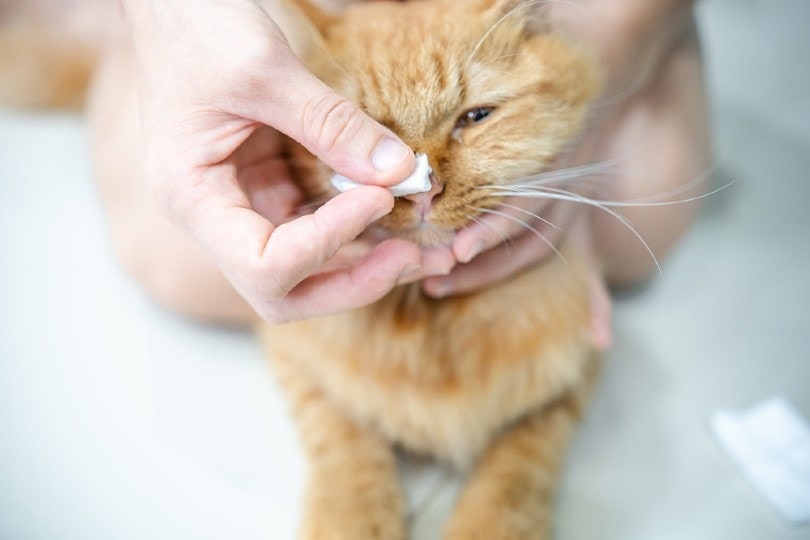
Frequently Asked Questions (FAQs)
What is the first thing to do if I notice a bump on my cat’s nose?
If you see a bump on your cat’s nose, take a photo. The photo can help you and your vet monitor the size, how quickly it changes, and whether both sides of the nose are equally impacted.
Can bumps on a cat’s nose be infectious?
Rarely, some forms of a cat’s nose bumps can be contagious when caused by viral or bacterial infections. Allergic reactions to bites are highly dependent on the individual cat.
What is involved in some of the common diagnostic procedures for bumps on a cat’s nose?
Rhinoscopy involves the use of an aid to visualize inside the nasal passages. This can be an endoscope, using a camera, or other simpler methods.
A nasal flush involves the use of forceful flushing of a sterile liquid through the nostrils and into the back of the mouth, gathering any material that is flushed out of this area in the process. Sometimes, tissue is removed, and this can aid in the diagnosis of cancers, such as lymphoma. Sometimes, it involves cultures of any mucus that is removed, to determine if a bacterial infection is involved.
Radiography or X-rays are commonly used to look for changes in the surrounding bones that might indicate certain diseases. Computer-aided tomography or magnetic resonance imaging are more advanced methodologies to image the nose.
For cats, all of the above procedures will involve sedation, if not a general anesthetic procedure. This means that your cat will not be awake or conscious during the procedures—but who wants to be awake when you have a camera shoved up your nose?
Conclusion
Bumps on the noses of cats are not terribly common, but can certainly be seen with a limited range of issues causing the problem. Photos are always your friend, as they allow both you and your vet to monitor progress, and decide if things are getting better or worse.
Symptoms seen generally relate to upper airway concerns, including sneezing, nasal discharge, and loss of smell. Treatment will depend on what the underlying cause is.
See also:
- Why Do Cats Lick & Groom Themselves So Often? 6 Possible Reasons
- How To Clean Up Cat Vomit (Step by Step Guide)
Featured Image Credit: Nana Trongratanawong, Shutterstock




